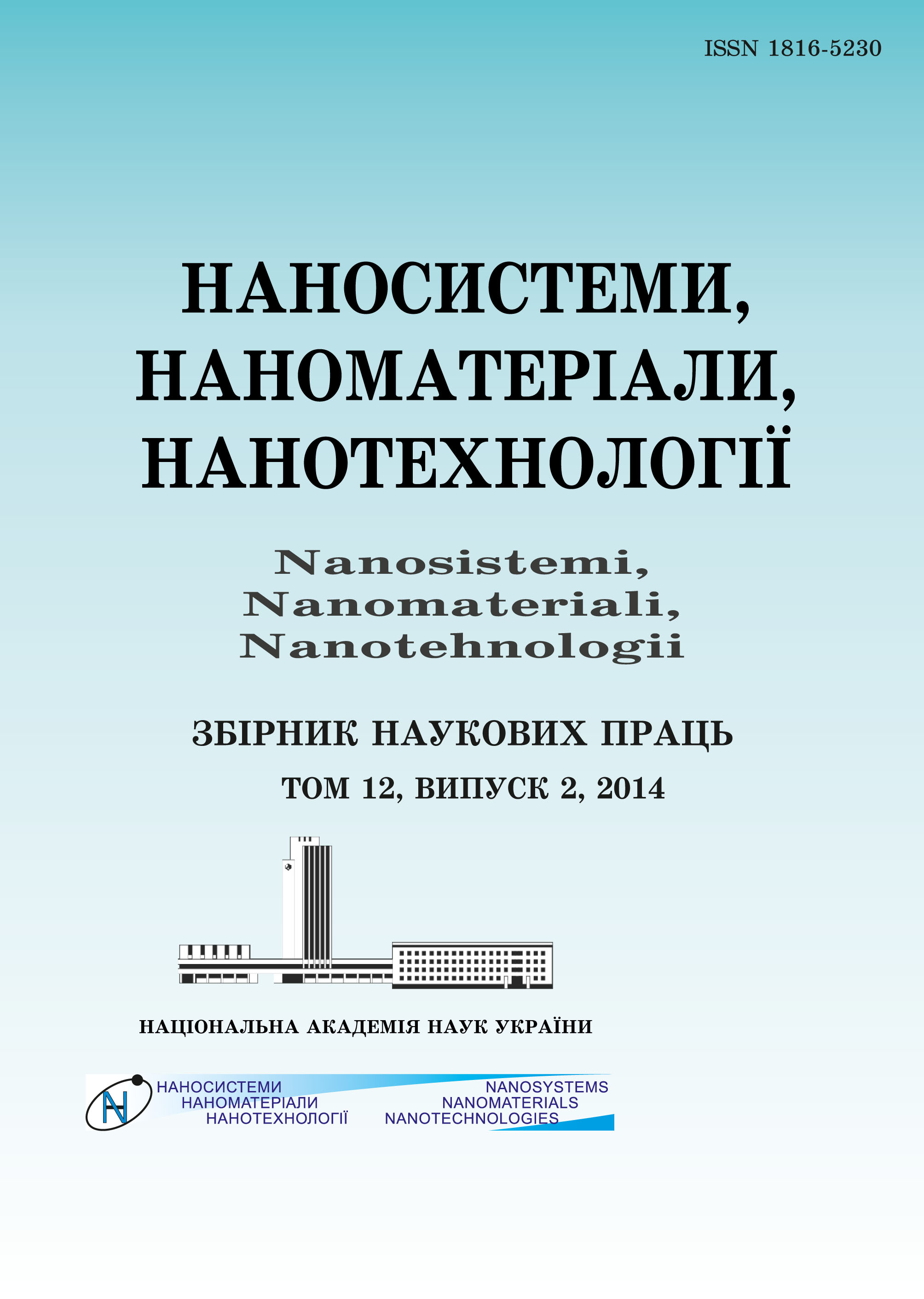|
|
|||||||||
 |
Year 2020 Volume 18, Issue 4 |
|
|||||||
|
|||||||||
Issues/2020/vol. 18 /Issue 4 |
V. I. Kanevskii, S. O. Kolienov
«Analysis of Conditions for Effective Photochemical Subnanopolishing of Quartz Surface Using the Total Internal Reflection Effect»
0903–0918 (2020)
PACS numbers: 42.25.Fx, 42.25.Gy, 68.35.Ct, 78.66.Jg, 78.68.+m, 81.65.Cf, 82.50.Hp
The method of photochemical subnanopolishing of the quartz surface, when it is illuminated from the side of the quartz at an angle realizing total internal reflection of light, is presented. The electrodynamic conditions for forming an optimal electric field over a quartz surface with a sinusoidal profile, which ensure effective etching of surface protrusions and the absence of such etching in troughs, are considered. As shown, the most effective is the illumination of the quartz surface at the critical angle of total internal reflection. Moreover, for a quartz surface with a sinusoidal profile, the height of the protrusions should not exceed 30 nm. At the same time, the contrast of the electric field in the region of the protrusions and troughs of such a surface is practically independent on the wavelength of the incident radiation and decreases with an increase in the correlation length of the surface profile. As revealed for a random profile with a Gaussian correlation function, the components of the surface spatial spectrum, for which maximum change in the amplitude with the spatial frequency occurs, are etched most intensely at the beginning. After etching beginning, with an increase in the length of the surface correlation, the maximum etching intensity of these spectral components decreases, shifting toward lower spatial frequencies.
Keywords: scattering of plane electromagnetic waves, vector Helmholtz equation, surface roughness, photochemical subnanopolishing
References
1. T. Yatsui, K. Hirata, W. Nomura et al., Appl. Phys. B, 93: 55 (2008). https://doi.org/10.1007/s00340-008-3142-z2. I. Ali, S. R. Roy, and G. Shinn, Solid State Technology, 10: 63 (1994).
3. L. F. Johnson and K. A. Ingersoll, Appl. Opt., 22: 1165 (1983).
4. W. Nomura, T. Yatsui, and M. Ohtsu, Progress in Nano-Electro-Optics VII. Springer Series in Optical Sciences. Vol. 155 (Ed. M. Ohtsu) (Berlin– Heidelberg: Springer-Verlag: 2010), p. 113. https://doi.org/10.1007/978-3-642-03951-5_4
5. M. Ohtsu, Dressed Photons (Berlin: Springer: 2014).
6. V. I. Kanevskii and S. O. Kolienov, Journal of Modern Optics, 67, No. 3: 242 (2020). https://doi.org/10.1080/09500340.2020.1713411
7. V. I. Grigoruk, V. I. Kanevskii, and S. O. Kolienov, Metallofizika i Noveishie Tekhnologii, 42, Iss. 1: 105 (2020) (in Ukrainian). https://doi.org/10.15407/mfint.42.01.0105
8. V. I. Grigoruk, V. I. Kanevskii, and S. O. Kolienov, Nanosistemi, Nanomateriali, Nanotehnologii, 17, No. 4: 637 (2019) (in Ukrainian). https://doi.org/10.15407/nnn.17.04.637
9. J. L. Volakis, A. Chatterjee, and L. C. Kempel, Finite Element Method for Electromagnetics: Antennas, Microwave Circuits, and Scattering Applications (IEEE Press: 1998).
10. J. Jin, The Finite Element Method in Electromagnetics (New York: Wiley: 2002).
11. H. Raether, Springer Tracts in Modern Physics, 111: 140 (1988).
12. M. Born and E. Wolf, Principles of Optics (New York: Pergamon Press: 1968).
13. W. C. Chew and W. C. Weedon, Microwave Opt. Tech. Lett., 7: 599 (1994). https://doi.org/10.1002/mop.4650071304
14. Z. S. Sacks,D. M. Kingsland,R. Lee, and J. F.Lee, IEEE Transactions on Antennas and Propagation, 43,Iss.12:1460 (1995). https://doi.org/0.1109/8.477075
15. A. Yariv and P. Yeh, Optical Waves in Crystals: Propagation and Control of Laser Radiation (New York: Wiley-Interscience: 2002).
 This article is licensed under the Creative Commons Attribution-NoDerivatives 4.0 International License ©2003—2021 NANOSISTEMI, NANOMATERIALI, NANOTEHNOLOGII G. V. Kurdyumov Institute for Metal Physics of the National Academy of Sciences of Ukraine. E-mail: tatar@imp.kiev.ua Phones and address of the editorial office About the collection User agreement |